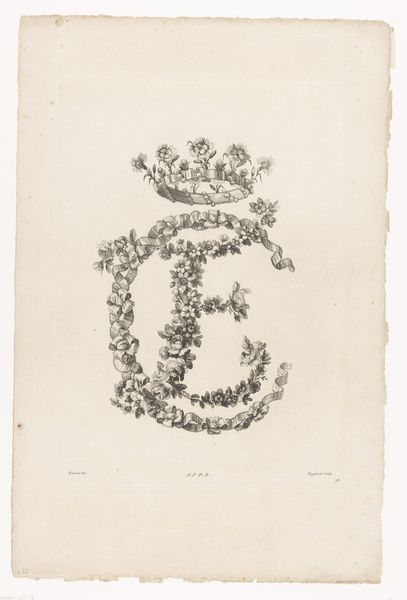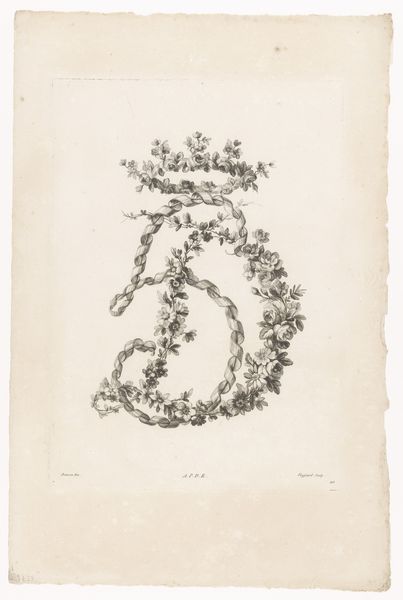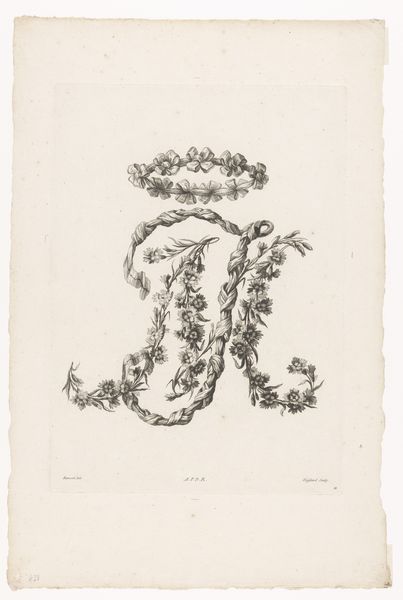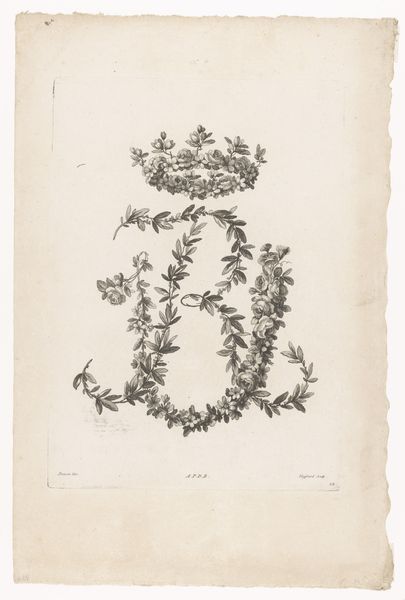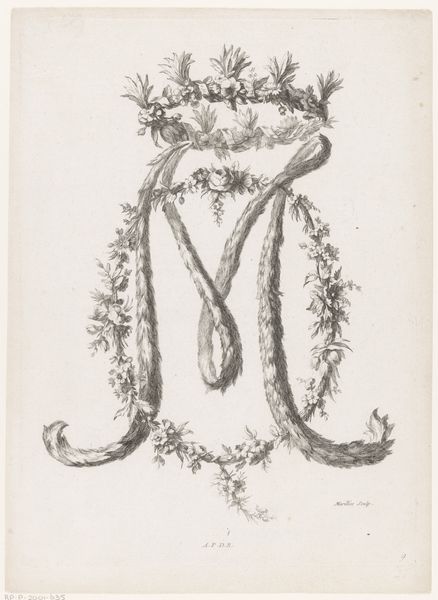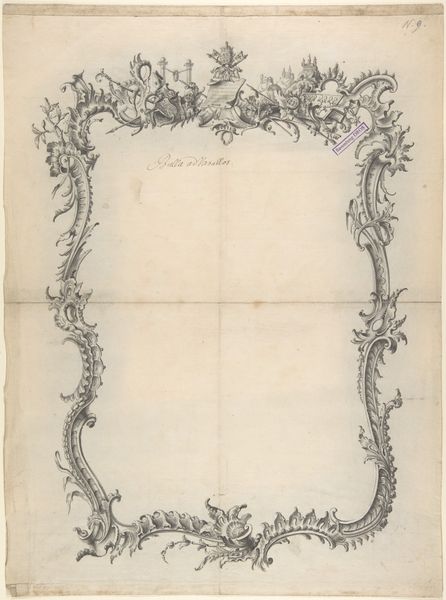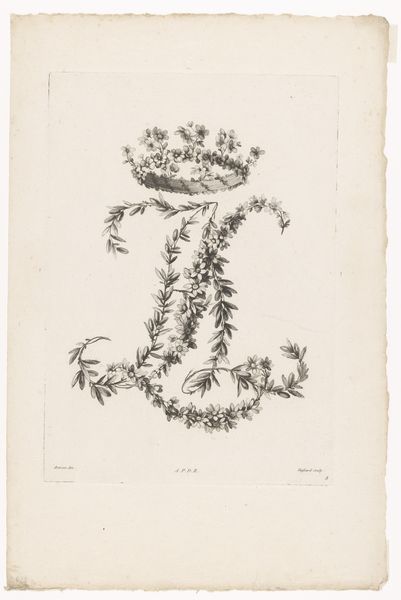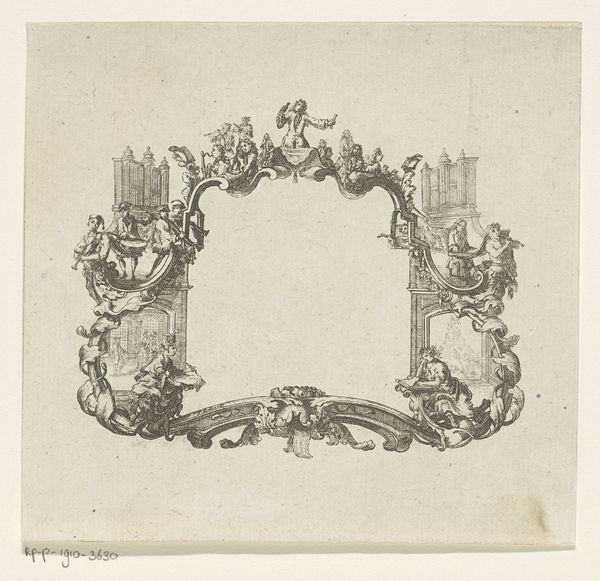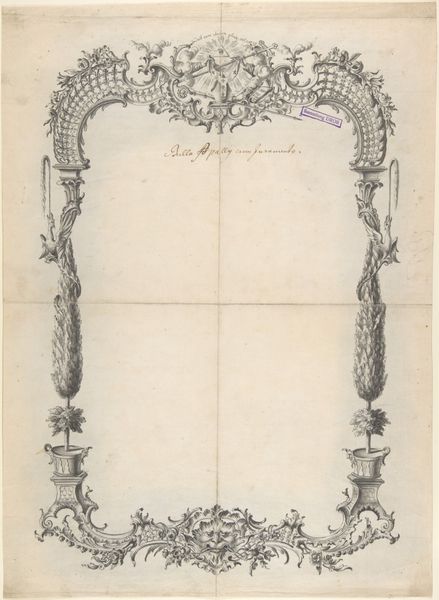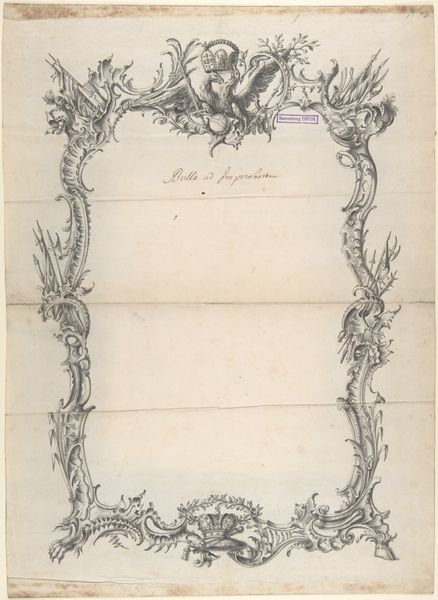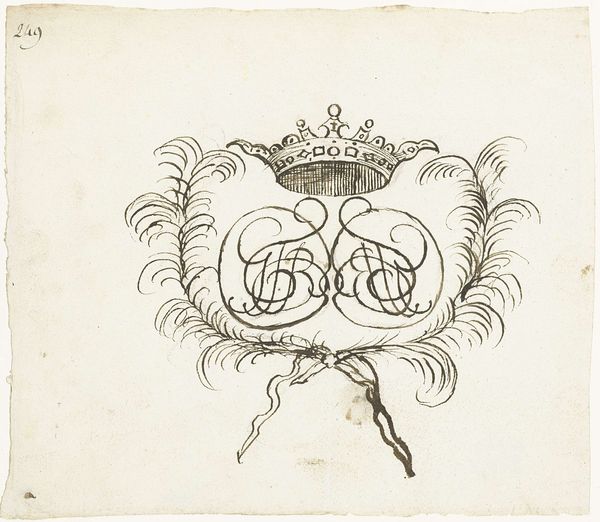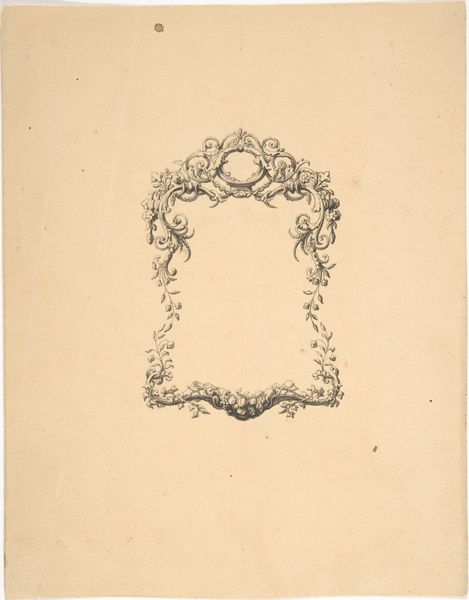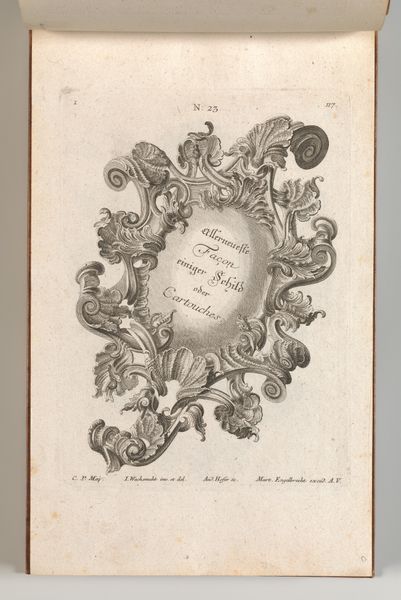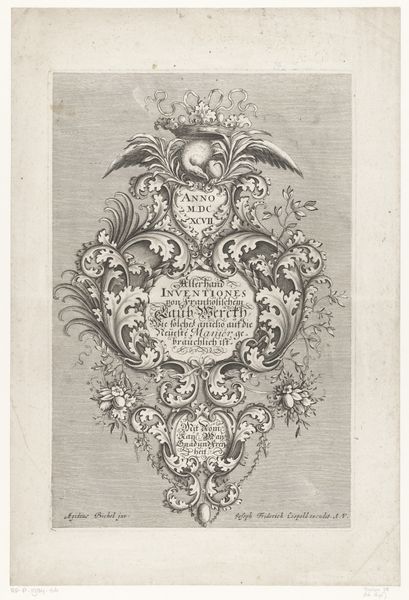
Dimensions: width 330 mm, width 237 mm
Copyright: Rijks Museum: Open Domain
Etienne Claude Voysard created this print, Monogram, in France sometime between 1760 and 1790 using etching and engraving. The image shows a large, ornate letter "D" intertwined with roses and topped with a floral crown. In the late 18th century, elaborate monograms like this were not just decorative; they were potent symbols of identity and status, particularly among the aristocracy. They appeared on everything from stationery to silverware, marking personal property with a clear sign of ownership and belonging to a certain social rank. The floral motifs and delicate execution speak to the Rococo aesthetic prevalent at the time, emphasizing elegance and refinement. This print isn’t merely a piece of art. It's a historical document reflecting the social customs and visual language of its time. To truly understand this work, one must delve into the socio-economic structures of 18th-century France. Researching etiquette manuals, fashion plates, and even inventories of aristocratic households can reveal the full significance of such symbols.
Comments
No comments
Be the first to comment and join the conversation on the ultimate creative platform.
